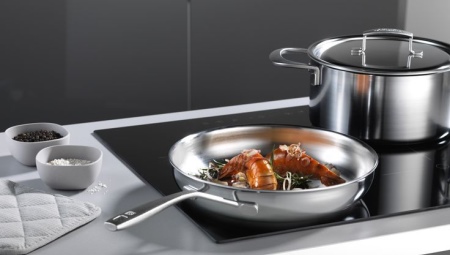Glass-ceramic plates are gaining popularity due to the aesthetic appearance. On the one hand, this technique simplifies cooking, and on the other hand, it requires more attention. For example, if you don’t take seriously the choice of dishes, you can quickly spoil both the kitchen utensils and the stove itself.

Features of glass-ceramic plates
The aesthetics of the exterior are often critical to the buyer of the electric stove. Few people think about the technical features of the devices. At the heart of the ceramic hob is a special material, zeran, which has increased strength. Halogen burners made of a special alloy are mounted under the ceramic panel, they are located by a snake.
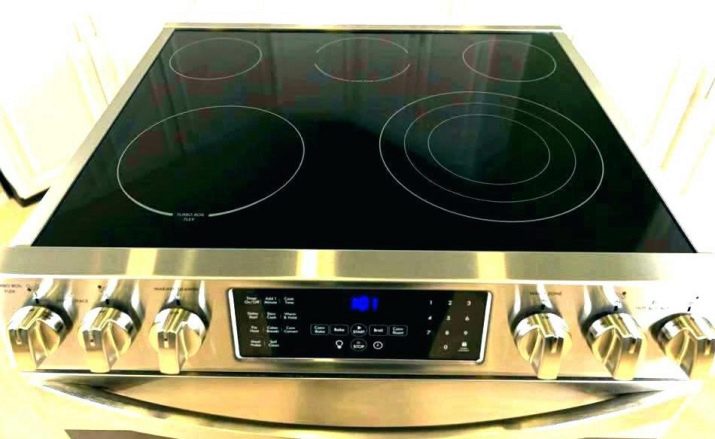
The principle of operation of the elements is similar to ordinary cast iron burners, but the elements are distinguished by high-speed heating, and still cool quickly. This feature is distinguished by the advantage of glass ceramics. The thermal conductivity of ceran is better, in comparison with cast iron, the wear resistance is also good.
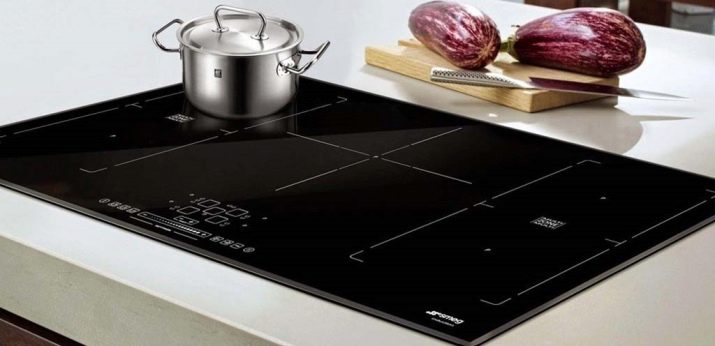
In terms of efficiency, this household appliance is more energy efficient.
Modern models are equipped with touch control, which simplifies the cooking process. Various functions are regulated by system sensors:
- for temperature conditions;
- for protection against burns;
- for protection against children;
- to reduce boiling (infrared sensor);
- to reduce cooking time (quick heat sensor).
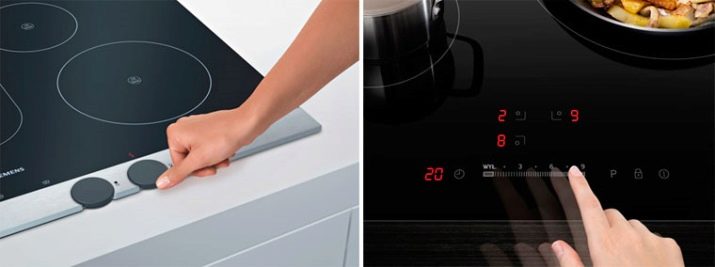
The disadvantages of glass ceramics include:
- stringent requirements for the dishes used;
- the need to use special detergents;
- sensitivity to shock with heavy sharp objects;
- high cost;
- the possibility of breakage due to temperature differences on the surface.

The advantages of household appliances include:
- easy care;
- the ability to adjust the heating area;
- stylish and sophisticated appearance;
- operating profitability, as burners do not require replacement.
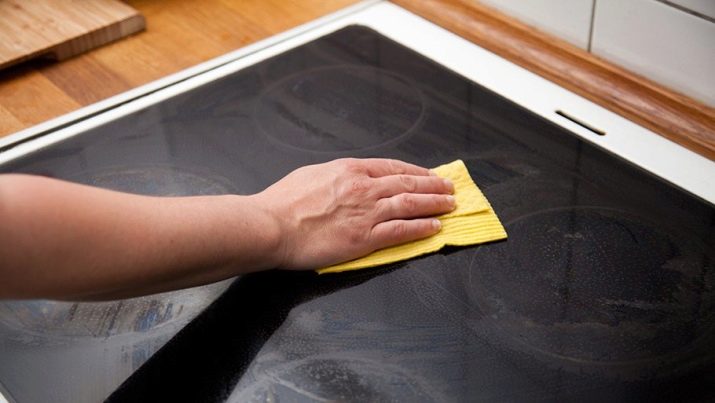
Modern household appliances help to improve the cooking process of even the most complex dishes. But without special utensils with the icon, you can not achieve savings, which means maximum heat transfer. The benefits of acquiring a device will tend to zero.
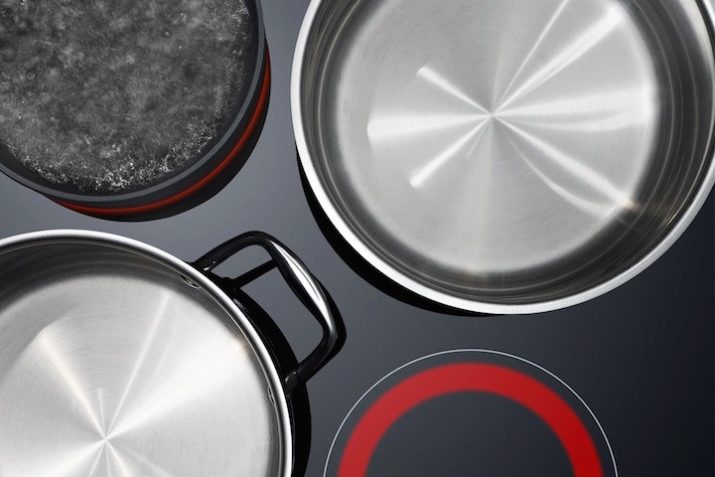
Utensils that can be used
Glass ceramics are often recommended to be selected depending on the type of heating element installed. Heat-resistant utensils with a flat bottom, without scratches, are suitable for household appliances with a mounted coil. There is a ban on the use of copper and aluminum utensils; heat-resistant glass is not recommended. If the stove is equipped with induction elements, you need to choose a special dish with a magnetic bottom.

To simplify the task of choosing the right utensils, modern models are equipped with a special sensor that reports on the correct choice.
For modern models, the size of the dishes is becoming less and less important. Double-circuit burners are adjusted to the desired heating diameter. Recently, models have appeared with unusual shapes of burners, for example, under oval utensils.
The material for making glass ceramic cookware is still important. For instance, for glass ceramics with ordinary burners, stainless steel pans are suitable. You can purchase a set with a special designation; during the cooking process, select products from the set that will correspond to the diameter of the burner.
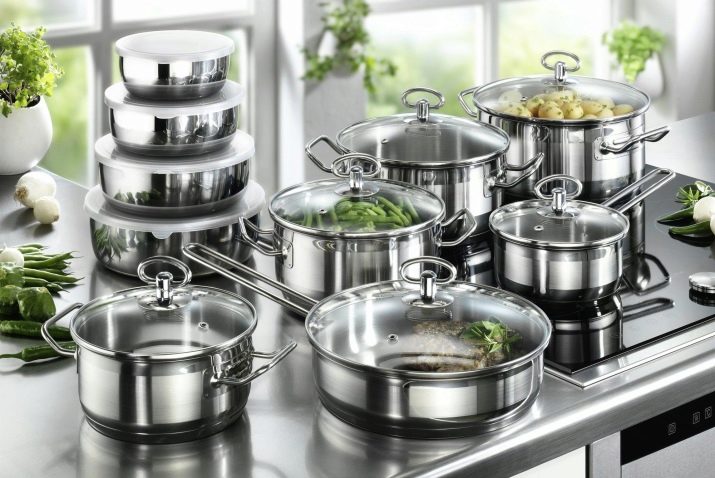
Stainless steel cookware is wear-resistant, durable, lasts a long time. There are sets of various forms on sale, but they do not differ in a variety of color schemes. The main advantage of this type of product is easy care.
At aluminum utensils good thermal conductivity, so it is also suitable for a glass surface with conventional burners. The main disadvantage of such pots is the lack of a perfectly flat bottom and quick scratches. Damaged dishes negatively affect the capabilities of the stove itself. On a glass-ceramic surface, such dishes are easily amenable to deformation and quickly deteriorate.
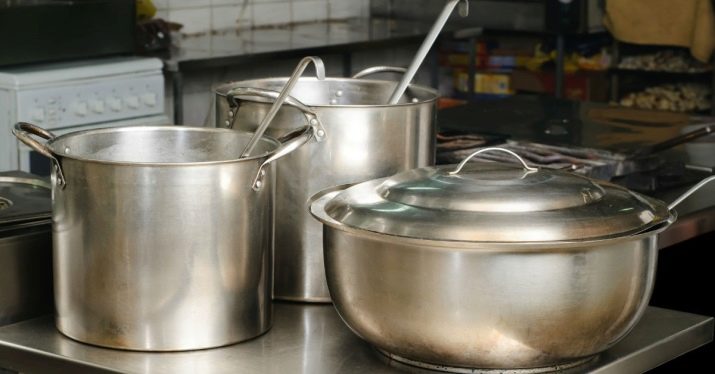
Without care, such utensils are vulnerable.
Enamelware It has a good appearance, it can also be matched to the style of the kitchen. The main criterion is the same - a perfectly flat bottom, no chips. Enamel is most quickly damaged, and damaged items cannot be used anymore. The objects reinforced with Teflon or ceramic coating will be stronger. The material has good thermal conductivity, products can be used for a long time in everyday life.
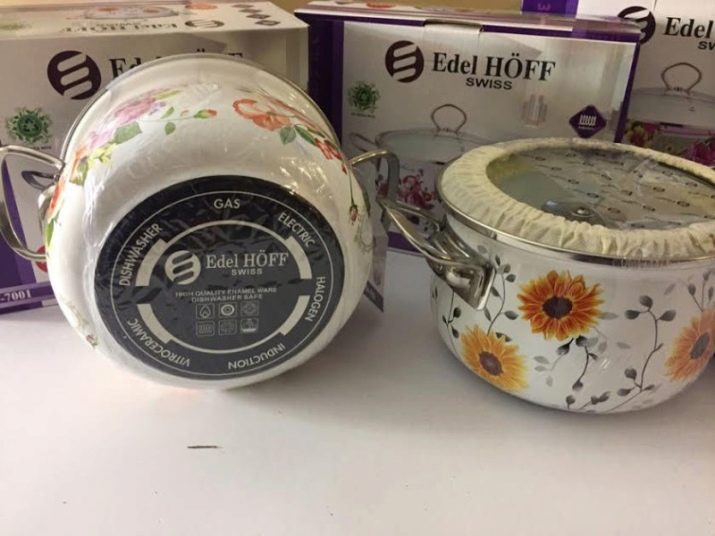
A good option would be a steel bottom.
Cast iron cookware with a flat bottom is also suitable for glass ceramics. For example, a cast-iron pan with the most even bottom will differ in thick walls. In such dishes, heat is stored longer, food is cooked more efficiently.

The main requirement for glassware is a perfectly flat bottom, preferably a multi-layer type.
Heat-resistant glass has several disadvantages, therefore not recommended as ideal for glass ceramics. One of the strongest arguments is the loss of thermal conductivity.
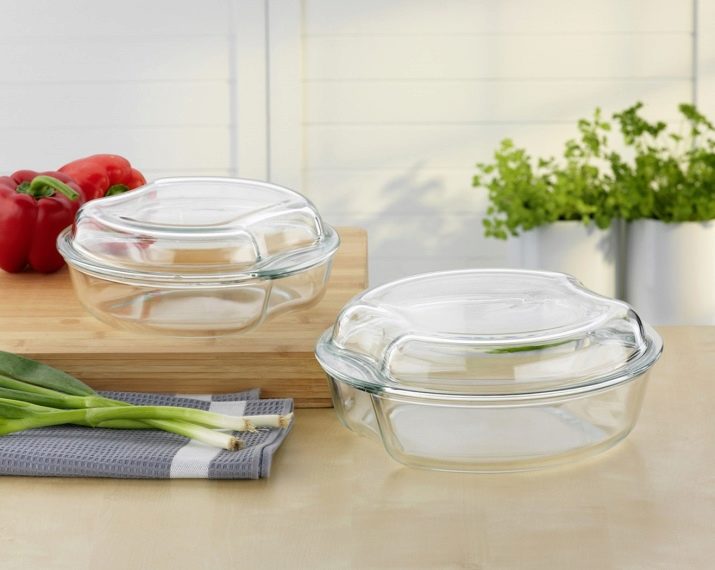
For example, above and below it can be stainless steel, and in the middle - aluminum. The “sandwich” stainless steel bottom heats up faster than usual. Stainless steel does not have very good thermal conductivity. The added materials must be firmly connected, so pay attention to the quality of the products. In uneven places of the connecting seam, carbon deposits quickly form. Check the bottom of existing dishes with an ordinary magnet.
Any magnetic alloys are suitable for induction burners.
What can not be used?
The main selection criterion: dishes for glass ceramics should be in maximum tight contact with the surface of the plate. If there is an air gap between the dishes and the surface, heating will be slow and cooking will take a long time. If you put the dishes with the missing magnetic properties on the induction stove, you can not wait for heating at all. Elements with sensors will not turn on.
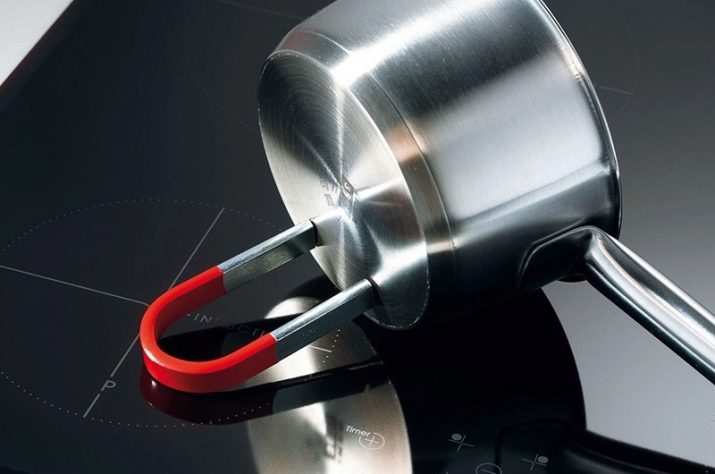
After the glass-ceramic stove appeared in the kitchen, it is recommended to conduct a complete audit of the existing utensils. Some items may not be suitable for use on new household appliances.
Even if pots and pans are strong enough, chips and roughness on them will negatively affect the glass-ceramic surface. Scratches will appear on the panel that cannot be repaired or masked. Therefore, special requirements are placed on the dishes. It is completely useless to put products from:
- brass;
- glass;
- copper;
- ceramics;
- aluminum.
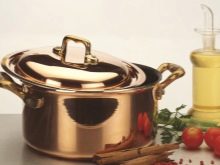

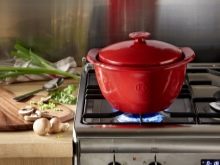
Products with a round bottom, for example, popular cauldrons and woks, are definitely not suitable for glass-ceramic. The area of mutual contact will be insignificant, so the heating will be very slow.
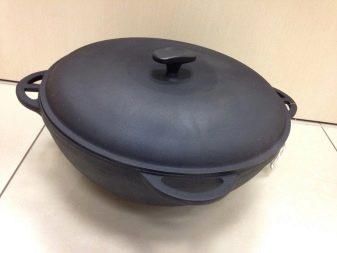
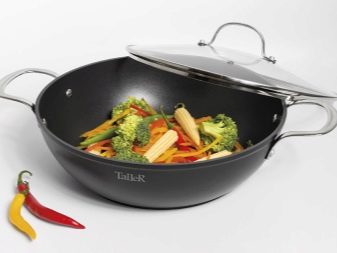
Do not use cookware that was previously used on a gas stove for glass ceramics. The bottoms of such products will already differ in irregularities, and they will also have different spots from heating by fire. Old cast iron pans patched with welding seams will definitely not work.
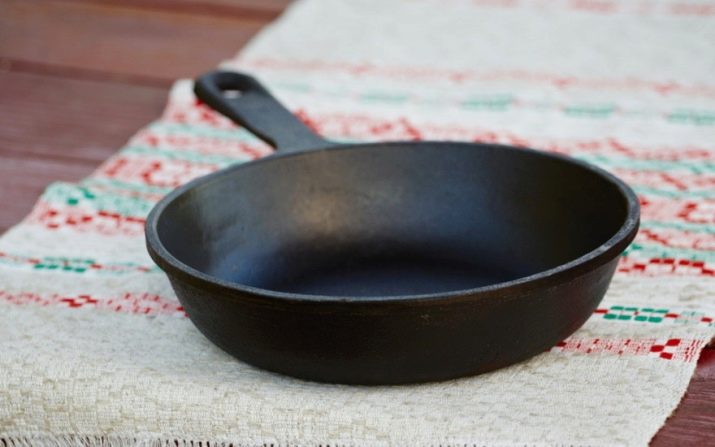
When choosing glass-ceramic cookware, pay attention to the manufacturer's recommendations.
Possible problems
A relatively new type of panels is induction cookers. Heating dishes in them is possible using eddy currents. They are formed under the influence of a field of electromagnetic waves. Such stoves have many advantages, but unlike panels with ordinary burners, these stoves can “recognize” the correct cookware.
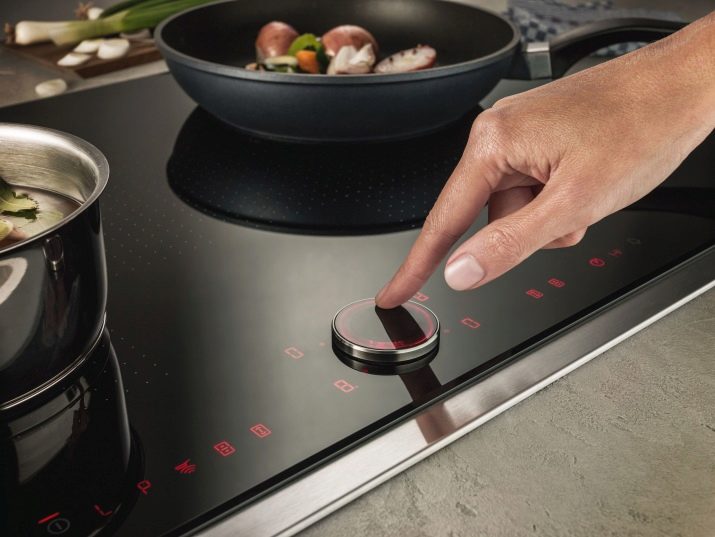
Features of the stove are associated with the principles of electromagnetic induction. Only due to eddy currents the bottom of the dishes will warm up. The heat from the heated bottom will be transferred to the products, while the surface itself remains slightly warm.
If you choose dishes that are not capable of transmitting electromagnetic waves, there will be no induction process. For example, if it is glass or ceramic utensils, you simply cannot cook food in it. But even the right cookware made of stainless steel or cast iron may not fit the stove if it does not match the size of the burner. It is important that the dishes cover about 70% of the diameter of the heating element.
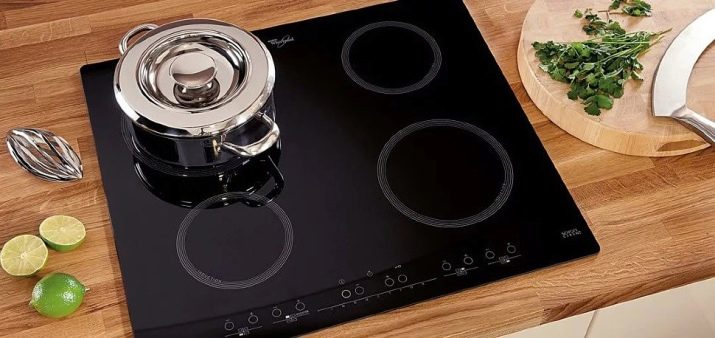
For example, a stove or a small bucket on a volumetric burner the stove simply "will not see."
Household appliances will not work if they “consider” that the bottom of the pan placed on it is uneven. Without a full fit, the hob simply shuts off automatically.
Now special magnetic disks are on sale, which can be used with induction cookers. You can select different elements suitable for a specific heating zone. If you put this disk on the element, and only then install the dishes, the stove will work with any pan or pan. The ferromagnetic disk is made of stainless steel; it is perfectly even, thick, and does not deform when used.

The method slightly reduces the efficiency of the household appliance itself, but frees from the purchase of another set of dishes, for example, if you have already bought a new one, but for some reason it did not fit.
For a conventional glass-ceramic plate, it is worth choosing dishes with the lowest possible percentage of reflection of the bottom. Thanks to this, the capacity heats up much faster, the distribution occurs smoothly. The models with the bottom of a dark matte shade will be most suitable. Gloss is able to reflect heat rays.
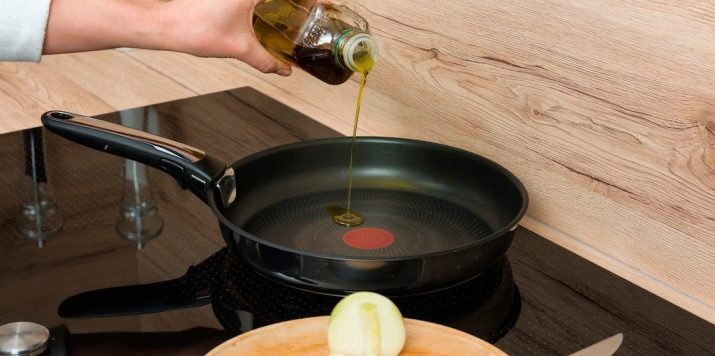
If the dishes have a thin bottom, it quickly deforms, so the recommended thickness is 3 mm. Do not choose models with too thick a bottom; they will heat up for a long time.
If you choose the right kitchen utensils for a ceramic glass stove, you can extend the life of the device. Food will cook quickly, and energy consumption will be rational.
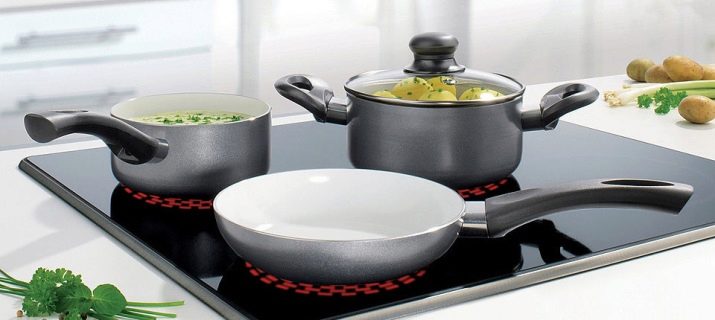
About the features of cookware for glass-ceramic plates, see below.
